Accelerated partial breast irradiation after conservative surgery for breast cancer
- PMID: 15075650
- PMCID: PMC1356231
- DOI: 10.1097/01.sla.0000114219.71899.13
Accelerated partial breast irradiation after conservative surgery for breast cancer
Abstract
Objective: To critically review the theoretical and actual risks and benefits of accelerated partial breast irradiation (APBI) after breast-conserving surgery.
Summary background data: Because of rapid evolution of radiation therapy techniques related to brachytherapy and three-dimensional conformal radiation therapy, APBI has very recently come to the forefront as a potential local treatment option for women with breast cancer. This review aims to give an overview of the biologic rationale for APBI techniques, and benefits and limitations of APBI techniques.
Methods: The authors reviewed the currently available published world medical literature on breast-conserving surgery with and without postoperative irradiation; all studies involving partial breast irradiation, including brachytherapy, for breast cancer; and currently accruing and planned APBI trials. The focus of this review was the early results of treatment in terms of toxicity, complications, cosmesis, and local control.
Results: On average, approximately 3% of patients treated with breast-conserving surgery will have an in-breast local recurrence away from the original lumpectomy site with or without postoperative standard whole-breast irradiation. The results of phase I-II studies involving approximately 500 patients treated with APBI after breast-conserving surgery have been published. Although many of the studies have limited long-term follow-up and potential selection bias, early results suggest that toxicity, cosmesis, and local control are comparable to outcomes seen after breast-conserving surgery followed by standard whole-breast irradiation.
Conclusions: Recent advances in radiation delivery and published series of partial breast irradiation support large randomized trials comparing APBI with standard whole-breast irradiation after breast-conserving surgery.
Figures

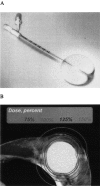
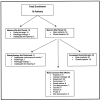
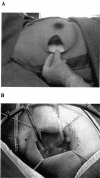
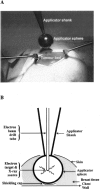

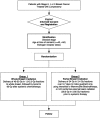
Comment in
-
Accelerated partial breast irradiation after conservative surgery for breast cancer.Ann Surg. 2005 Jul;242(1):147-8; author reply 148-9. doi: 10.1097/01.sla.0000169569.09715.c0. Ann Surg. 2005. PMID: 15973113 Free PMC article. No abstract available.
Similar articles
-
Late side-effects and cosmetic results of accelerated partial breast irradiation with interstitial brachytherapy versus whole-breast irradiation after breast-conserving surgery for low-risk invasive and in-situ carcinoma of the female breast: 5-year results of a randomised, controlled, phase 3 trial.Lancet Oncol. 2017 Feb;18(2):259-268. doi: 10.1016/S1470-2045(17)30011-6. Epub 2017 Jan 14. Lancet Oncol. 2017. PMID: 28094198 Clinical Trial.
-
Breast conserving surgery and accelerated partial breast irradiation using the MammoSite system: initial clinical experience.Arch Surg. 2005 Aug;140(8):787-94. doi: 10.1001/archsurg.140.8.787. Arch Surg. 2005. PMID: 16103290
-
[Accelerated partial breast irradiation: a concept to individualize treatment in breast cancer].Cancer Radiother. 2007 Nov;11(6-7):287-95. doi: 10.1016/j.canrad.2007.09.145. Epub 2007 Oct 30. Cancer Radiother. 2007. PMID: 17977768 Review. French.
-
Long-term primary results of accelerated partial breast irradiation after breast-conserving surgery for early-stage breast cancer: a randomised, phase 3, equivalence trial.Lancet. 2019 Dec 14;394(10215):2155-2164. doi: 10.1016/S0140-6736(19)32514-0. Epub 2019 Dec 5. Lancet. 2019. PMID: 31813636 Free PMC article. Clinical Trial.
-
Accelerated partial breast irradiation by brachytherapy: present evidence and future developments.Jpn J Clin Oncol. 2020 Jul 9;50(7):743-752. doi: 10.1093/jjco/hyaa064. Jpn J Clin Oncol. 2020. PMID: 32444872 Review.
Cited by
-
Targeted Intraoperative Radiotherapy Is Non-inferior to Conventional External Beam Radiotherapy in Chinese Patients With Breast Cancer: A Propensity Score Matching Study.Front Oncol. 2020 Oct 8;10:550327. doi: 10.3389/fonc.2020.550327. eCollection 2020. Front Oncol. 2020. PMID: 33134162 Free PMC article.
-
Full-dose intra-operative radiotherapy with electrons (ELIOT) during breast-conserving surgery: experience with 1246 cases.Ecancermedicalscience. 2008;2:65. doi: 10.3332/eCMS.2008.65. Epub 2008 Feb 26. Ecancermedicalscience. 2008. PMID: 22275962 Free PMC article.
-
Dosimetric Improvements in Balloon Based Brachytherapy Using the Contura® Multi-Lumen Balloon (MLB) Catheter to Deliver Accelerated Partial Breast Irradiation.J Contemp Brachytherapy. 2010 Mar;2(1):1-8. doi: 10.5114/jcb.2010.13716. Epub 2010 Apr 1. J Contemp Brachytherapy. 2010. PMID: 28031736 Free PMC article.
-
Dosimetric impact of tumor bed delineation variability based on 4DCT scan for external-beam partial breast irradiation.Int J Clin Exp Med. 2015 Nov 15;8(11):21579-85. eCollection 2015. Int J Clin Exp Med. 2015. PMID: 26885108 Free PMC article.
-
Current modalities of accelerated partial breast irradiation.Nat Rev Clin Oncol. 2013 Jun;10(6):344-56. doi: 10.1038/nrclinonc.2013.65. Epub 2013 Apr 30. Nat Rev Clin Oncol. 2013. PMID: 23629470 Review.
References
-
- Malin JL, Schuster MA, Kahn KA, et al. Quality of breast cancer care: what do we know? J Clin Oncol. 2002;20:4381–4393. - PubMed
-
- Ballard-Barbash R, Potosky AL, Harlan LC, et al. Factors associated with surgical and radiation therapy for early stage breast cancer in older women. J Natl Cancer Inst. 1996;88:716–726. - PubMed
-
- Morrow M, White J, Moughan J, et al. Factors predicting the use of breast-conserving therapy in stage I and II breast carcinoma. J Clin Oncol. 2001;19:2254–2262. - PubMed
-
- Mandelblatt JS, Hadley J, Kerner JF, et al. Patterns of breast carcinoma treatment in older women: patient preference and clinical and physical influences. Cancer. 2000;89:561–573. - PubMed
-
- Fisher ER, Anderson S, Tan-Chiu E, et al. Fifteen-year prognostic discriminants for invasive breast carcinoma: National Surgical Adjuvant Breast and Bowel Project Protocol-06. Cancer. 2001;91(8 Suppl):1679–1687. - PubMed
Publication types
MeSH terms
LinkOut - more resources
Full Text Sources
Medical

